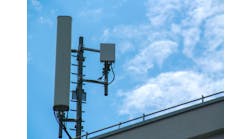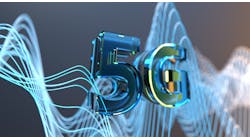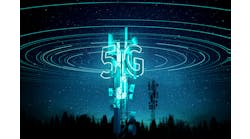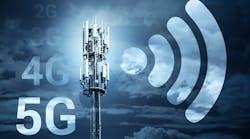Related to
Latest from 5G/Core Automation/Operations
So, You Think You Know 5G?
Or is it Time for a 5G 101 Refresher?
You can hardly turn on a television today without seeing an ad for 5G. “This company is the fastest 5G!” “This company is the most available 5G!” “This company is first with ‘true’ 5G!” The headlines virtually scream confusing and contradictory claims. This article is a refresher of what 5G is and its major components. This may help you or your new team members dig into the advantages of 5G and cut through some of the oft quoted ballyhoo on the subject.
5G Basics
5G refers to a set of standards developed for a series of technologies for a new (5th) generation of mobile communications services. Ultimately this set of criteria will replace, or at least strongly supplement, the mobile service currently available in most of the US—4G LTE (fourth generation–Long Term Evolution). The new design is much faster—theoretically, maybe up to 100 times as fast as 4G LTE. Practically, it’s several times faster in terms of download or upload speeds and offers lower latency.
To dive a bit deeper, see Figure 1 which locates 5G in a communications network model. The basis of this sketch is a standard used to analyze telecommunications networks called the “End User/Access/Switching” model. It illustrates this model with 5G applied to it.
Of course, 5G is only one part of a communications network—the “Access” part. We should also trace a connection through a 5G communication channel to provide an understanding link in its totality.
To begin, note that the figure only shows half of the total circuit. The other half, to the right of the drawing, is a mirror reflection of what is displayed. In other words, another “Switching and Control,” another “Access,” and another “End User” section is needed to complete the entire circuit. This mirrored Access may or may not be 5G.
We also can’t forget the snazzy 5G phone that is within this realm. Even though it shows in the End User section in the drawing, this part (the modem/radio) is really the only interface to the Access. (Remember, “Modem” is a composite word made up of “modulate” and “demodulate”.) The Modem receives data from the 5G Access section and demodulates (translates) that data into material understandable by the phone. When transmitting, the Modem works in reverse, modulating the data from the phone into 5G language. A 5G radio is also embedded in the End User device.
Of course, the 5G radio communicates (through the air) to a 5G antenna located on a tower, building, or other structure. There the 5G signal is again demodulated (or, if received from the network side, modulated) and hands the information off to the Switching and Control section. After demodulation (or before modulation, depending on which way you are going), the signal from the 5G connection looks like any other signal (of wireline or wireless origination) and is transmitted through the network. This step determines the correct destination, and the message is forwarded back through a connection of Access and End User to complete the link.
With that, the communications channel is complete. While we have referred to the End User part as being a 5G phone, remember that it could also be a sense point, a control device, a computer, a video device (camera, screen, or both). A high percentage of the data transmitted over the Internet is video. Thus, a high percentage of the connections will involve a video screen and/or camera.
“Thinking first about ‘faster,’ what does that mean? Some versions of 5G service can send data as much as 20 times faster than a top 4G service. Even the milder versions of 5G are more rapid than 4G.”
Why All These Gs?
Since 5G is an odd name for a communications system, all major carriers have come up with versions of more familiar and sellable names—Ultra High-Speed, Ultra Capacity, Ultra-Wideband, Extended Range, and others. Still, these all refer to various flavors of 5G networks.
So, how did the name “5G” originate? The answer is simple; it was next after 4G. Still, today, the vast majority of mobile calls in this country are on 4G or 4G LTE. So, where did 4G come from? You guessed it. It was next after 3G; with this predictable patter going back to the beginning of mobile service to 1G.
In a nutshell, below is a list of what changed with each iteration. A new generation of cellular standards has appeared approximately every 10th year since 1G systems were introduced in 1982. Each Generation is characterized by new frequency bands, higher data rates, and non-backward-compatible transmission technology.
- 1st Generation (1G) began in the 1970s delivering voice. It was an analog service know as Improved Mobile Telephone Service (IMTS). The big “improvement” over previous radio telephone services was that no operator was involved in call setup.
- 2nd Generation (2G) was introduced in the 1990s. With 2G, came digital voice—e.g., Code Division Multiple Access (CDMA). 2G was the first digital cellular service. 2G also added limited messaging service to the digital voice.
- 3rd Generation (3G) evolved in the early 2000s. 3G added mobile data—e.g., CDMA2000—to the service and connected the Internet to laptops and other computers. It was much faster than previous services.
- 4th Generation (4G) came along in the 2010s. It provided, in addition to the usual voice and other services of 3G, mobile broadband Internet access. It allowed better data connections to laptops with wireless modems, smartphones, and other mobile devices. This step brought broadband data services to the mobile world.
- LTE Advanced (4G LTE) is a mobile communication standard that significantly enhanced the Long-Term Evolution (LTE) standard. 4G LTE is the service widely deployed in the US today. It offers fully high-resolution video and other broadband services like video conferencing, which has become so popular recently.
- 5th Generation (5G) provides for much higher speeds and much-improved latency as we’ve discussed above.
5G Advocates
As the industry embraces 5G, we need to understand its real advantages. We also need to be ready to dispel any false ideas about 5G.
We have noted before that the benefits of 5G are that it is faster and has lower latency. Thinking first about “faster,” what does that mean? Some versions of 5G service can send data as much as 20 times faster than a top 4G service. Even the milder versions of 5G are more rapid than 4G. End users will notice the difference immediately if they are an aficionado of watching videos and movies on their phone, tablet, or computer. The download will be much quicker if the bandwidth is there to support it. If it is streaming video, there will be no glitches and pauses; the quality will be almost equal to a movie theater. The difference will also be startling if they routinely send and receive large databases.
That's the “faster” benefit to the end user, but what about the carriers? (We used to call them telcos, but I'm not sure that applies now.) They are investing, literally, billions of dollars in 5G architecture. (It doesn't look like that much in the above sketch, does it?) What are they getting in return? Why are they so interested in people converting to 5G? The reason to the carriers is “faster” means “higher capacity”. With 5G, all carriers will have an answer for the seemingly endless expansion of demand for mobile bandwidth—and sorely needed incremental Average Revenue Per User (ARPU).
In many large cities with relatively dense populations, 4G is reaching its limits. Services are slowing down and becoming less reliable. With mobile data on a forecasted growth of around 30% a year, we have a train wreck in view. 5G is the answer. Moving traffic onto the much more capable 5G networks relieves the existing 4G network and allows for growth.
Latency is a little less straightforward to explain. Latency refers to the time it takes for a signal to transmit a given communications link. Electrons and photons move very fast, but they still take time, although measured in thousands of a second (milliseconds/ms.). Over time, 5G latency could be in the low single digits of milliseconds. This is essential for some applications, such as autonomous vehicles. Instantaneous communications are a matter of life and death to the occupants of the vehicles in that application. Many other Internet of Things (IoT) applications also require instantaneous send and receive for various industrial control services.
That said, such a latency improvement will not significantly impact the average customer unless their current service is terrible.
That's 5G in a nutshell. There’s more to come for 5G and, as professionals in this industry, it’s important that we can educate others in simple terms about the structure of a 5G connection, the major components of 5G services, its origin, and advantages.
ABOUT THE AUTHOR
Clifford Holliday, BSEE, MBA, PE, KY Colonel, Mensa, is an author after 31-years experience with GTE and 20 more as a consultant designing major fiber networks serving customers on three continents. He is also a lead analyst for Information Gatekeepers, Inc. and has published more than 50 major reports and multiple books since 1999. His latest book is “5G and You.” For more information, please email [email protected] or visit www.amazon.com/author/clifholliday. Follow him on LinkedIn: in/CliffordHolliday.

Clifford Holliday | BSEE, MBA, PE, KY Colonel, Mensa
Clifford Holliday, BSEE, MBA, PE, KY Colonel, Mensa, is an author after 31-years experience with GTE and 20 more as a consultant designing major fiber networks serving customers on three continents. He is also a lead analyst for Information Gatekeepers, Inc. and has published more than 50 major reports and multiple books since 1999. His latest book is “5G and You.” For more information, please email [email protected] or visit www.amazon.com/author/clifholliday. Follow him on LinkedIn: in/CliffordHolliday.







